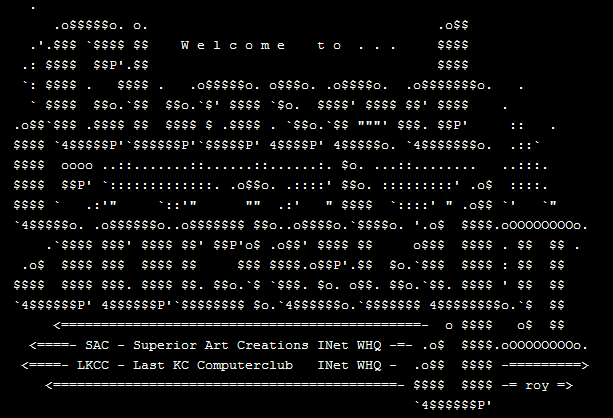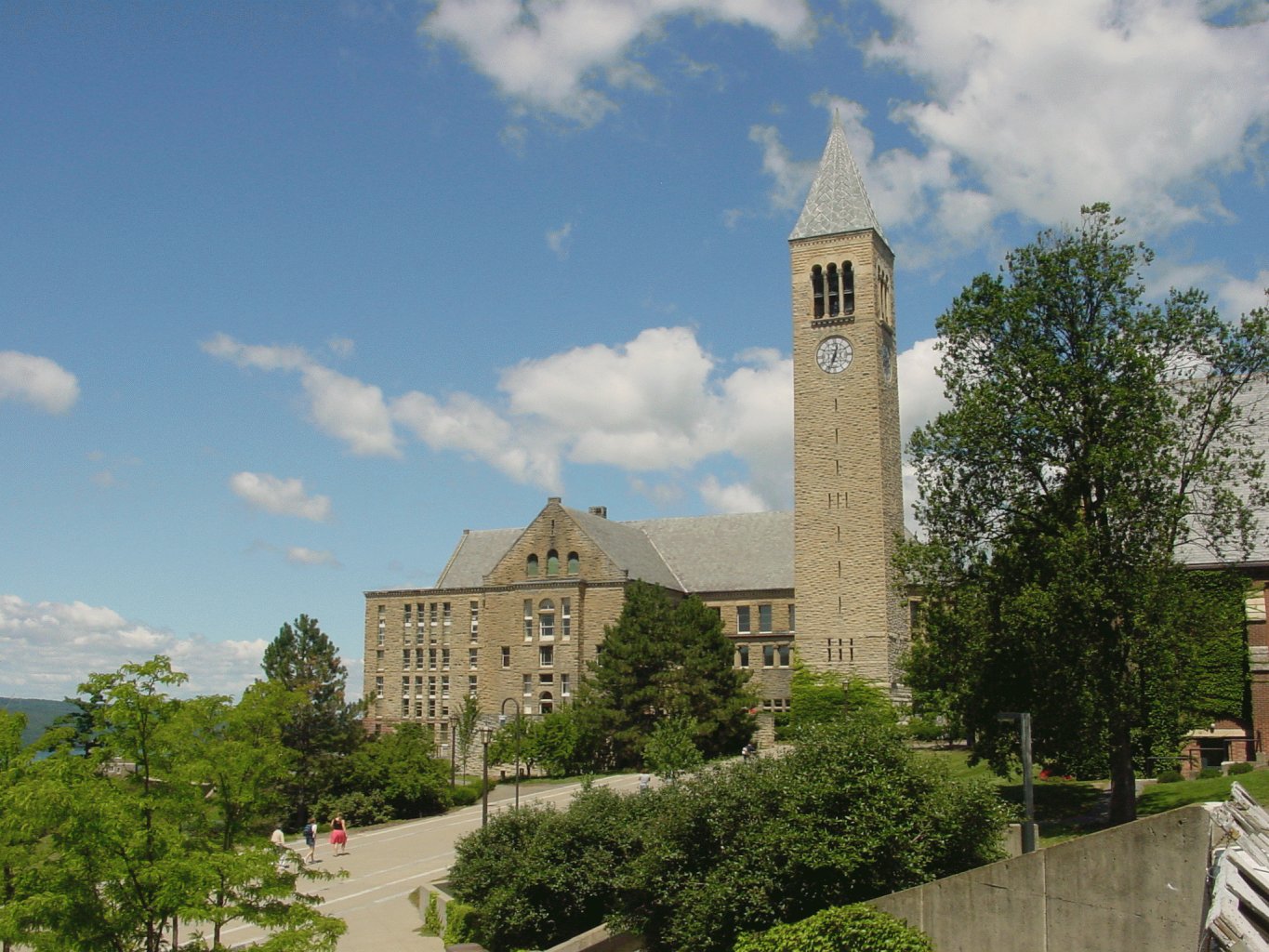|
New Media Art Preservation
The conservation and restoration of new media art is the study and practice of techniques for sustaining new media art created using from materials such as digital, biological, performative, and other variable media. New media art runs a unique risk when it comes to longevity that has resulted in the development of new and different preservation and restoration strategies and tools. To preserve and restore these pieces of new media art, there are a variety of strategies including storage, migration, emulation, and reinterpretation. There are even more tools used to implement these strategies including Archivematica, BitCurator, Conifer, Media Info, PRONOM, QC Tools, and the Variable Media Questionnaire. The common metadata schema used for new media art is Media Art Notation System (MANS). Despite the name "new media art," there is a diverse history of preservation and restoration efforts including both individual efforts and consortium efforts. Preservation strategies Storage Th ... [...More Info...] [...Related Items...] OR: [Wikipedia] [Google] [Baidu] |
New Media Art
New media art includes artworks designed and produced by means of new media, electronic media technology, technologies, comprising virtual art, computer graphics, computer animation, digital art, interactive art, sound art, Internet art, video games, robotics, 3D printing, and cyborg art. The term defines itself by the thereby created artwork, which differentiates itself from that deriving from conventional visual arts (i.e. architecture, painting, sculpture, etc.). New Media art has origins in the worlds of science, art, and performance. Some common themes found in new media art include databases, political and social activism, Afrofuturism, feminism, and identity, a ubiquitous theme found throughout is the incorporation of new technology into the work. The emphasis on medium is a defining feature of much contemporary art and many art schools and major universities now offer majors in "New Genres" or "New Media" and a growing number of graduate programs have emerged international ... [...More Info...] [...Related Items...] OR: [Wikipedia] [Google] [Baidu] |
San Francisco Museum Of Modern Art
The San Francisco Museum of Modern Art (SFMOMA) is a modern and contemporary art museum located in San Francisco, California. A nonprofit organization, SFMOMA holds an internationally recognized collection of modern and contemporary art, and was the first museum on the West Coast devoted solely to 20th-century art. The museum's current collection includes over 33,000 works of painting, sculpture, photography, architecture, design, and media arts, and moving into the 21st century.Collection at sfmoma.org. The collection is displayed in of exhibition space, making the museum one of the largest in the United States overall, and one of the in the world for modern and contemporary art. Found ... [...More Info...] [...Related Items...] OR: [Wikipedia] [Google] [Baidu] |
Virtual Art
Virtual art is a term for the virtualization of art, made with the technical media developed at the end of the 1980s (or a bit before, in some cases). These include human-machine interfaces such as visualization casks, stereoscopic spectacles and screens, digital painting and sculpture, generators of three-dimensional sound, data gloves, data clothes, position sensors, tactile and power feed-back systems, etc. As virtual art covers such a wide array of mediums it is a catch-all term for specific focuses within it. Much contemporary art has become, in Frank Popper's terms, virtualized. Definition Virtual art can be considered a post-convergent art form based on the bringing together of art and technology, thus containing all previous media as subsets. Sharing this focus on art and technology are the books of Jack Burnham (''Beyond Modern Sculpture'' 1968) and Gene Youngblood (''Expanded Cinema'' 1970). Since virtual art can consist of virtual reality, augmented reality, or mixed real ... [...More Info...] [...Related Items...] OR: [Wikipedia] [Google] [Baidu] |
New Media Art
New media art includes artworks designed and produced by means of new media, electronic media technology, technologies, comprising virtual art, computer graphics, computer animation, digital art, interactive art, sound art, Internet art, video games, robotics, 3D printing, and cyborg art. The term defines itself by the thereby created artwork, which differentiates itself from that deriving from conventional visual arts (i.e. architecture, painting, sculpture, etc.). New Media art has origins in the worlds of science, art, and performance. Some common themes found in new media art include databases, political and social activism, Afrofuturism, feminism, and identity, a ubiquitous theme found throughout is the incorporation of new technology into the work. The emphasis on medium is a defining feature of much contemporary art and many art schools and major universities now offer majors in "New Genres" or "New Media" and a growing number of graduate programs have emerged international ... [...More Info...] [...Related Items...] OR: [Wikipedia] [Google] [Baidu] |
National Digital Information Infrastructure And Preservation Program
The National Digital Information Infrastructure and Preservation Program (NDIIPP) of the United States was an archival program led by the Library of Congress to archive and provide access to digital resources. The program convened several working groups, administered grant projects, and disseminated information about digital preservation issues. The U.S. Congress established the program in 2000, and official activity specific to NDIIPP itself wound down between 2016 and 2018. The Library was chosen because of its role as one of the leading providers of high-quality content on the Internet. The Library of Congress has formed a national network of partners dedicated to preserving specific types of digital content that is at risk of loss. In July 2010, the Library launched a National Digital Stewardship Alliance (NDSA) to extend the work of NDIIPP to more institutions. The organization, which has been hosted by the Digital Library Federation since January 2016, focuses on several g ... [...More Info...] [...Related Items...] OR: [Wikipedia] [Google] [Baidu] |
National Digital Library Program
The Library of Congress National Digital Library Program (NDLP) is assembling a digital library of reproductions of primary source materials to support the study of the history and culture of the United States. Begun in 1995 after a five-year pilot project, the program began digitizing selected collections of Library of Congress archival materials that chronicle the nation's rich cultural heritage. In order to reproduce collections of books, pamphlets, motion pictures, manuscripts and sound recordings, the Library has created a wide array of digital entities: bitonal document images, grayscale and color pictorial images, digital video and audio, and searchable e-texts. To provide access to the reproductions, the project developed a range of descriptive elements: bibliographic records, finding aids, and introductory texts and programs, as well as indexing the full texts for certain types of content. The reproductions were produced with a variety of tools: image scanners, digit ... [...More Info...] [...Related Items...] OR: [Wikipedia] [Google] [Baidu] |
Digital Art
Digital art refers to any artistic work or practice that uses digital technology as part of the creative or presentation process, or more specifically computational art that uses and engages with digital media. Since the 1960s, various names have been used to describe digital art, including computer art, multimedia art and new media art. History John Whitney, a pioneer of computer graphics, developed the first computer-generated art in the early 1960s by utilizing mathematical operations to create art. In 1963, Ivan Sutherland invented the first user interactive computer-graphics interface known as Sketchpad. Andy Warhol created digital art using a Commodore Amiga where the computer was publicly introduced at the Lincoln Center, New York, in July 1985. An image of Debbie Harry was captured in monochrome from a video camera and digitized into a graphics program called ProPaint. Warhol manipulated the image by adding color by using flood fills. After some initial resistan ... [...More Info...] [...Related Items...] OR: [Wikipedia] [Google] [Baidu] |
Art Conservation
The conservation and restoration of cultural property focuses on protection and care of cultural property (tangible cultural heritage), including artworks, architecture, archaeology, and museum collections. Conservation activities include preventive conservation, examination, documentation, research, treatment, and education. This field is closely allied with conservation science, curators and registrars. Definition Conservation of cultural property involves protection and restoration using "any methods that prove effective in keeping that property in as close to its original condition as possible for as long as possible." Conservation of cultural heritage is often associated with art collections and museums and involves collection care and management through tracking, examination, documentation, exhibition, storage, preventive conservation, and restoration. The scope has widened from art conservation, involving protection and care of artwork and architecture, to conservatio ... [...More Info...] [...Related Items...] OR: [Wikipedia] [Google] [Baidu] |
Rose Goldsen Archive Of New Media Art
The Cornell University Library is the library system of Cornell University. As of 2014, it holds over 8 million printed volumes and over a million ebooks. More than 90 percent of its current 120,000 periodical titles are available online. It has 8.5 million microfilms and microfiches, more than of manuscripts, and close to 500,000 other materials, including motion pictures, DVDs, sound recordings, and computer files in its collections, in addition to extensive digital resources and the University Archives. It is the sixteenth largest library in North America, ranked by number of volumes held. It is also the thirteenth largest research library in the U.S. by both titles and volumes held. Structure The library is administered as an academic division; the University Librarian reports to the university provost. The holdings are managed by the Library's subdivisions, which include 16 physical and virtual libraries on the main campus in Ithaca, New York; a storage annex in Ithaca ... [...More Info...] [...Related Items...] OR: [Wikipedia] [Google] [Baidu] |
Still Water (University Of Maine)
Still Water was a research and development laboratory at the New Media Department of the University of Maine that studied and built networks for artists, academics, and other creative professions. Still Water examined networking from technical, social, and political angles; specific areas of interest included online collaboration, indigenous sharing protocols, and limits placed on artistic remixes and filesharing by intellectual property law. Digital tools Still Water has released social software intended to foster collaborative creation, distribution, and preservation of common culture. ThoughtMesh and The Pool are meant to connect digital scholars and creators, and have been described as incubators for artists and students that may serve as a means of evaluating academics working in new media. Still Water is also the current development team for the Variable Media Questionnaire, a tool that tracks strategies for preserving ephemeral artworks and has been proposed as a means of r ... [...More Info...] [...Related Items...] OR: [Wikipedia] [Google] [Baidu] |
New Museum Of Contemporary Art
The New Museum of Contemporary Art, founded in 1977 by Marcia Tucker, is a museum in New York City at 235 Bowery, on Manhattan's Lower East Side. History The museum originally opened in a space in the Graduate Center of the then-named New School for Social Research at 65 Fifth Avenue. The New Museum remained there until 1983, when it rented and moved to the first two and a half floors of the Astor Building at 583 Broadway in the SoHo neighborhood. In 1999, Marcia Tucker was succeeded as director by Lisa Phillips, previously the curator of contemporary art at the Whitney Museum of American Art. In 2001 the museum rented 7,000 square feet of space on the first floor of the Chelsea Art Museum on West 22nd Street for a year.Randy Kennedy (July 25, 2004)The New Museum's New Non-Museum''New York Times''. Over the past five years, the New Museum has exhibited artists from Argentina, Brazil, Bulgaria, Cameroon, China, Chile, Colombia, Cuba, Germany, India, Poland, Spain, South Afric ... [...More Info...] [...Related Items...] OR: [Wikipedia] [Google] [Baidu] |








